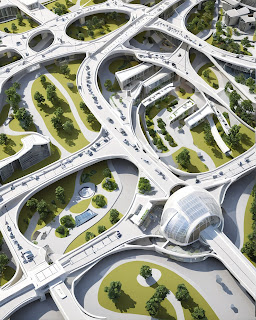CREATOR:AMEEN SAHBAN
Exploring the Life and Work of a Modern Architect
Architecture is not just about buildings; it is about crafting experiences, shaping environments, and creating spaces that inspire and resonate with the human spirit. In this blog, we delve into the life of a modern architect, uncovering what fuels their creativity and what sets them apart in a world where architecture is rapidly evolving.
The Early Journey: From Passion to Profession
CREATOR:AMEEN SAHBANEvery architect begins their journey with a passion for design, creativity, and problem-solving. Whether it was building structures with blocks as a child or sketching dream houses on scrap paper, this early passion evolves over time. A budding architect typically goes through years of education, where they learn the technical and theoretical aspects of the field. Programs in architecture schools are rigorous, often involving long hours of studio work, critique sessions, and learning to balance creativity with practicality.
A Day in the Life: Balancing Creativity and Functionality
CREATOR:AMEEN SAHBANAn architect's daily routine is a blend of conceptualization, technical drafting, and problem-solving. They work closely with clients to understand their needs, transforming visions into tangible structures. A significant portion of their time is spent in meetings—whether with clients, engineers, or contractors—to ensure every aspect of the design aligns with functionality, safety standards, and, of course, aesthetics.
Many architects begin their day in the studio, sketching ideas or using design software like AutoCAD, Revit, or SketchUp to create digital models. Depending on the project stage, they may also visit construction sites, ensuring their designs are being implemented correctly. Communication is key in their profession, as they need to articulate complex ideas to a range of stakeholders.
The Architect's Toolbox: Key Skills and Tools
CREATOR:AMEEN SAHBANIn the age of modern technology, an architect's skill set has expanded beyond hand-drawing and model-making. Proficiency in digital design tools is essential, with software like BIM (Building Information Modeling) being the industry standard. This technology allows architects to create 3D representations of buildings, ensuring precision and accuracy from conception through to construction.
But an architect’s role isn’t just about technical prowess. They must have a deep understanding of materials, structural integrity, environmental sustainability, and local building codes. Balancing these technical requirements with creativity is what makes the job so challenging yet rewarding.
Architectural Philosophy: The Importance of Sustainability
In recent years, sustainability has become a defining element of architectural design. Modern architects are tasked with creating environmentally responsible structures—designs that reduce energy consumption, utilize sustainable materials, and harmonize with their surroundings. This shift in philosophy reflects a growing awareness of climate change and the need to build more eco-friendly spaces.
The best architects today are leading the charge in sustainable design, incorporating green roofs, solar panels, energy-efficient systems, and materials that minimize the carbon footprint of their buildings. This emphasis on sustainability extends beyond residential homes to skyscrapers,public institutions, and even urban design.
Landmark Projects: A Signature Style
CREATOR:AMEEN SAHBAN
Every architect has a signature style—whether it’s minimalist, industrial, or futuristic. Some become known for a particular type of project, such as skyscrapers, museums, or residential homes.Signature projects often serve as defining moments in their career, allowing them to showcase their unique vision to the world.For example, renowned architects like Zaha Hadid, Frank Gehry, and Tadao Ando are celebrated for their daring designs and unconventional approaches to space and form. Their works push the boundaries of traditional architecture, challenging the status quo and creating spaces that inspire awe.
The Future of Architecture: Challenges and Opportunities
CREATOR:AMEEN SAHBAN
The future of architecture is both exciting and uncertain. Architects today face unique challenges, such as rapidly evolving technology, the growing need for sustainable solutions, and shifting urban landscapes. At the same time, these challenges present opportunities for innovation and creativity.With the rise of smart cities and advancements in building technology, architects are now exploring how to design more responsive and intelligent spaces. Artificial intelligence, 3D printing, and virtual reality are revolutionizing the way architects plan and execute their projects, enabling them to experiment with new forms and materials.
Conclusion: The Legacy of an Architect
An architect’s work leaves a lasting impact on the world around them. Every building, every structure, is a reflection of their vision and philosophy. From small homes to towering skyscrapers, the spaces they create influence how people live, work, and interact with their environment.In conclusion, the life of an architect is one of perpetual learning, creativity, and problem-solving. It’s a profession that blends art with science, passion with precision, and vision with reality. The architects of today are not just designing buildings; they are shaping the future of our world.









![Terry Farrell [ British architect]](https://blogger.googleusercontent.com/img/b/R29vZ2xl/AVvXsEgF5Bc7-F6oyGHwVlcJfUVoN9PAph8ZIAQAVTMDZ0oOX0kIENEGN84Arj8wxKS666_yV2hRHMM4zlJ5gCJFBA1ttvrGBPrCNY0tZWfcuPl0aolt_szKpBjWtbLYutI4ivHBLrzZkj-wEk_l_1paoEEVkgnzCt7yvpHoDkhm63TxHxL45GUgV2OZVkwLYkWG/w100/11e81b6d-862f-4a23-a2d0-950d22063de0.png)



0 Comments